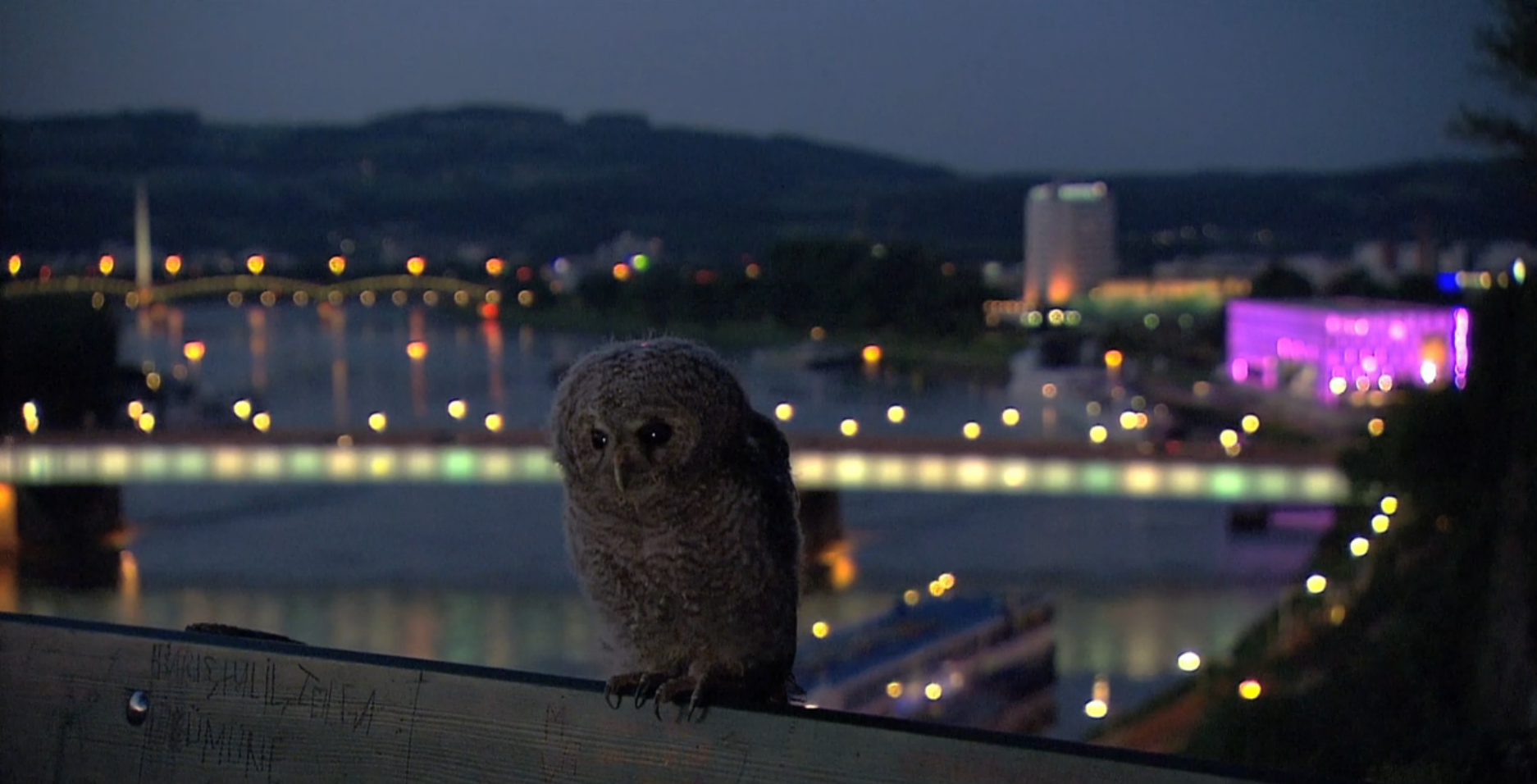
Those who were born in Linz half a century ago may remember a very different city to what visitors see today. Nestled on the banks of the River Danube, this capital of Upper Austria has been the site of a massive steel industry and chemical plants since the Second World War, making it one of the country’s most important economic centres. Historically well known for its iron, smoke, fire, grit and hard-graft lifestyle (as well as, somewhat more gently, the Linzer torte—said to be the oldest cake in the world) Linz has now become also become one of Austria’s greenest communities. Indeed, half of the entire city is designated as green land.
The documentary City of Steel, City of Life—now available on-demand on the Love Nature streaming app—explores the secret lives of the animals found nestled in amongst old steel works and twisting streets, the show chronicling their amazing resurgence in the heart of Europe’s most industrious of landscapes. As a little taster of what to expect, we’ve compiled a list of our five favourite animal survivors who all make an appearance in the documentary, and who are now living in harmony with humankind inside Austria’s greenest city.
Alpine Chough
The Alpine or yellow-billed chough (Pyrrhocorax graculus) is a member of the crow family and one of Europe’s most iconic alpine avians. Its glossy black plumage, yellow beak, red legs and unique calls make it a very distinctive bird. Couple this with the bird’s buoyant acrobatic flight and fidelity to a particular breeding site and the alpine chough definitely becomes a memorable addition to the city of Linz, especially around the university campus where many have taken roost. Although the choughs are still subject to predation and parasitism, and changes in agricultural practices have caused local population declines, this widespread and abundant species is thankfully not threatened globally.
Green Toads
The European green toad is an excellent coloniser, native to many harsh areas including steppes, mountain landscapes and semi-deserts. They will alter their colour in response to heat and light changes and female toads—who are larger than males—can lay up to an amazing 15,000 eggs at one time. The toads’ penchant for sparsely filled-lands and barren ponds has made the water-soaked landfills of post-industrial Linz excellent new homes for these amphibians. They arrive, mate and spawn quickly, before moving on to new areas as other wildlife begins to take hold in the newly colonised plots.
Badgers
There’s a scene in City of Steel, City of Life that takes place in an industrialist’s grand mansion, today lying open and in ruins. Inside, badgers run up and down hallways, causing mischief, chewing on doors and generally being inquisitive. Fun as it may look, urban badgers are a growing concern across Europe—their number are increasing year-on-year and ultimately this is leading to more and more run ins with their human neighbours. Linz’s police force also had a strange encounter of a different kind with the animals before now too. The mating call of a badger can sound deceptively like a screaming woman, which led a few years ago to one lovestruck creature sparking a search for an assault victim with a police helicopter!
Signal Crayfish
Signal crayfish are fished regularly, if on a smaller scale, across Linz’s section of the Danube, although the species itself is actually native to North America. From 1907, crayfish plague—an infectious disease caused by a form of water mould—damaged stocks of the native European crayfish Astacus astacus. Since the signal crayfish occupied a similar ecological niche in its native range, it was imported in the 1960s to Sweden and Finland to allow recreational and commercial crayfish capture.
However it was not realised at the time that the signal crayfish was a carrier of the crayfish plague. All American species carry the infection, but it is only lethal to individuals that are already stressed. To European species the infection is rapidly fatal. The signal crayfish is now the most widespread alien crayfish in Europe, occurring in 25 countries, from Finland to Great Britain, Spain to Greece and of course Austria.
Mute Swans
The name ‘mute’ derives from this species being less vocal than others in the family, which is a bit unfortunate for Linz’s swans as they’d struggle to be heard at the best of times amongst the din and clamour of Linz’s more industrialised sections. Based upon the banks of the Danube, these mute swans no longer rely on the river’s reeds to construct their nests, instead using rags and rubbish pilfered from the nearby working industrial sites. Surprisingly, they’re quite welcomed by the workers, despite the fact that the birds can be very territorial at times—as anyone who’s ever come too close to a brooding mother mute can vouch for!
The world is often divided up in peoples’ minds into two camps: nature and civilisation. But Linz is a great example of how these two world views needn’t be mutually exclusive. Even the most altered of urban landscapes can still offer hope and homes for some of Europe’s most iconic animal and plant species.
If you’d like to find out more, you can watch City of Steel, City of Life today, with a 30-day free trial of Love Nature Streaming, for the best natural history documentaries on the net.
ON THE APP
City of Steel, City of Life
See the future of city life as it plays out in Linz, one of Europe’s most modern and ecologically friendly cities. From amphibians in man-made swamps to the foxes and raccoons that call the city home, witness a place where industry, culture and nature become one.






